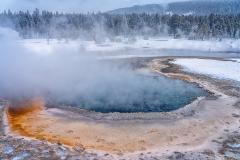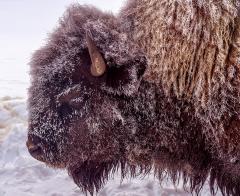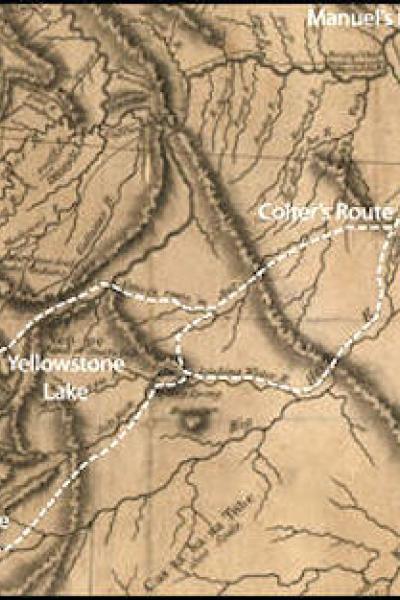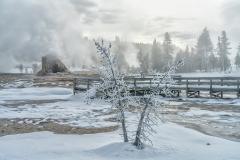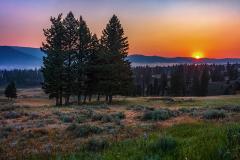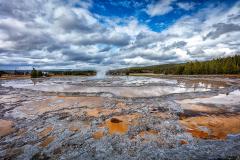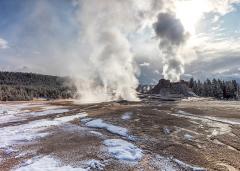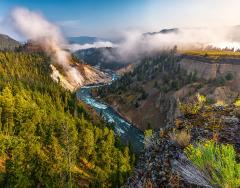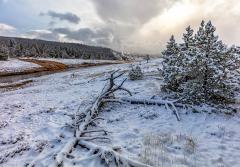Bison - And Human - Footprints Around Crested Pool, Yellowstone National Park
"With temperatures that average temperate of 191.1°F (88.4°C), Crested Pool is almost constantly boiling, sometimes to 6 feet (2 m) or more. The extreme heat prevents most bacterial growth, resulting in exceptionally clear blue water. Boiling is particularly active along the intricate sinter formation circling the spring, the “crested” edge. Listen for the sizzling. Crested Pool has an average pH of 8.9 and an average conductivity of 2269 uS/cm."
- By Rebecca Latson - March 22nd, 2022 4:00am

